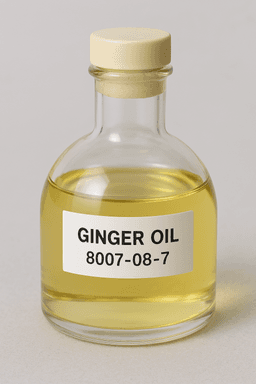


Antimony trioxide (Sb2O3) is an inorganic compound commonly used as a flame retardant and as a catalyst in various industrial applications. It is a white, odorless powder or solid used predominantly in the manufacture of plastics, textiles, glass, and electronic components. Its primary application is as a synergist in halogenated flame retardants, enhancing the flame-retardant properties of materials.


Antimony trioxide (Sb2O3) is an inorganic compound commonly used as a flame retardant and as a catalyst in various industrial applications. It is a white, odorless powder or solid used predominantly in the manufacture of plastics, textiles, glass, and electronic components. Its primary application is as a synergist in halogenated flame retardants, enhancing the flame-retardant properties of materials.

.3d8f8f41.svg)
Industrial Chemicals
.3556d45a.svg)

Inorganic Chemicals


Flame retardants
Included in Quote
Included in Quote
Included in Quote
Included in Quote
.7767eb0f.png)

Chemical Properties & Specifications
Incorporated into plastics, textiles, and coatings to enhance their fire-resistant properties. It acts as a synergist in Combination with halogenated flame retardants.
Used in the manufacture of polyethylene terephthalate (PET), contributing to the production of bottles, containers, and fibers.
Employed in the production of certain types of glass and ceramics, improving their thermal and optical properties.
Used in the production of semiconductors and other electronic devices where it serves as an additive for the enhancement of electronic components.
It is used as a flame retardant in plastics, textiles, and coatings, and in the manufacturing of ceramic enamels and glass.
Antimony trioxide is an inorganic compound appearing as a white crystalline powder. It serves multiple industrial purposes, including: Flame Retardant Synergist: Enhances the effectiveness of halogenated flame retardants in materials like plastics, textiles, and coatings. Opacifying Agent: Used in glasses, ceramics, and enamels to impart opacity. Catalyst: Facilitates the production of polyethylene terephthalate (PET) and aids in the vulcanization of rubber.
When combined with halogenated flame retardants, antimony trioxide promotes the formation of less flammable chars, thereby enhancing the material's resistance to combustion.
While antimony trioxide itself is not a flame retardant, it acts as a synergist, enhancing the effectiveness of halogenated flame retardants. This combination is widely used due to its cost-effectiveness and efficiency in reducing flammability.
In the production of PET plastics, antimony trioxide acts as a catalyst, accelerating the polymerization process and improving production efficiency.
Antimony trioxide can migrate into air and dust from products containing it, leading to potential environmental contamination. Proper handling and disposal practices are essential to mitigate environmental impact.
Engineering Controls: Implement adequate ventilation systems to limit airborne concentrations. Personal Protective Equipment (PPE): Utilize appropriate respiratory protection, gloves, and protective clothing. Hygiene Practices: Ensure proper washing facilities and discourage eating or drinking in areas where antimony trioxide is handled.
Carcinogenic Potential: Classified as "reasonably anticipated to be a human carcinogen" by the National Toxicology Program. Occupational Exposure: Inhalation can lead to respiratory issues; thus, a Threshold Limit Value (TLV) of 0.5 mg/m³ has been established for workplace air.

CAS No. : 154477-54-0
Category : Pharmaceutical Actives & Precursors
Sub-Category : Intermediates & Precursors
Description: Fexo Chloro is a pharmaceutical intermediate primarily used in the synthesis of Fexofenadine, a seco...

CAS No. : 144020-22-4
Category : Fragrance Ingredients
Description: Trimofix is a soft, elegant musk with woody nuances. It provides excellent substantivity on fabric a...

CAS No. : 52829-07-9
Category : Light Stabilizers
Sub-Category : Low Molecular Weight HALS
Description: UV Stabilizer 770 is a low molecular weight hindered amine light stabilizer (HALS) that provides exc...

CAS No. : 8007-08-7
Category : Fragrance Ingredients
Description: Ginger oil is a natural essential oil extracted from the rhizomes of the ginger plant (Zingiber offi...

CAS No. : 11141-17-6
Category : Crop Protection & Pest Control
Sub-Category : Biopesticide
Description: Azadirachtin is a naturally occurring tetranortriterpenoid derived from neem tree (Azadirachta indic...